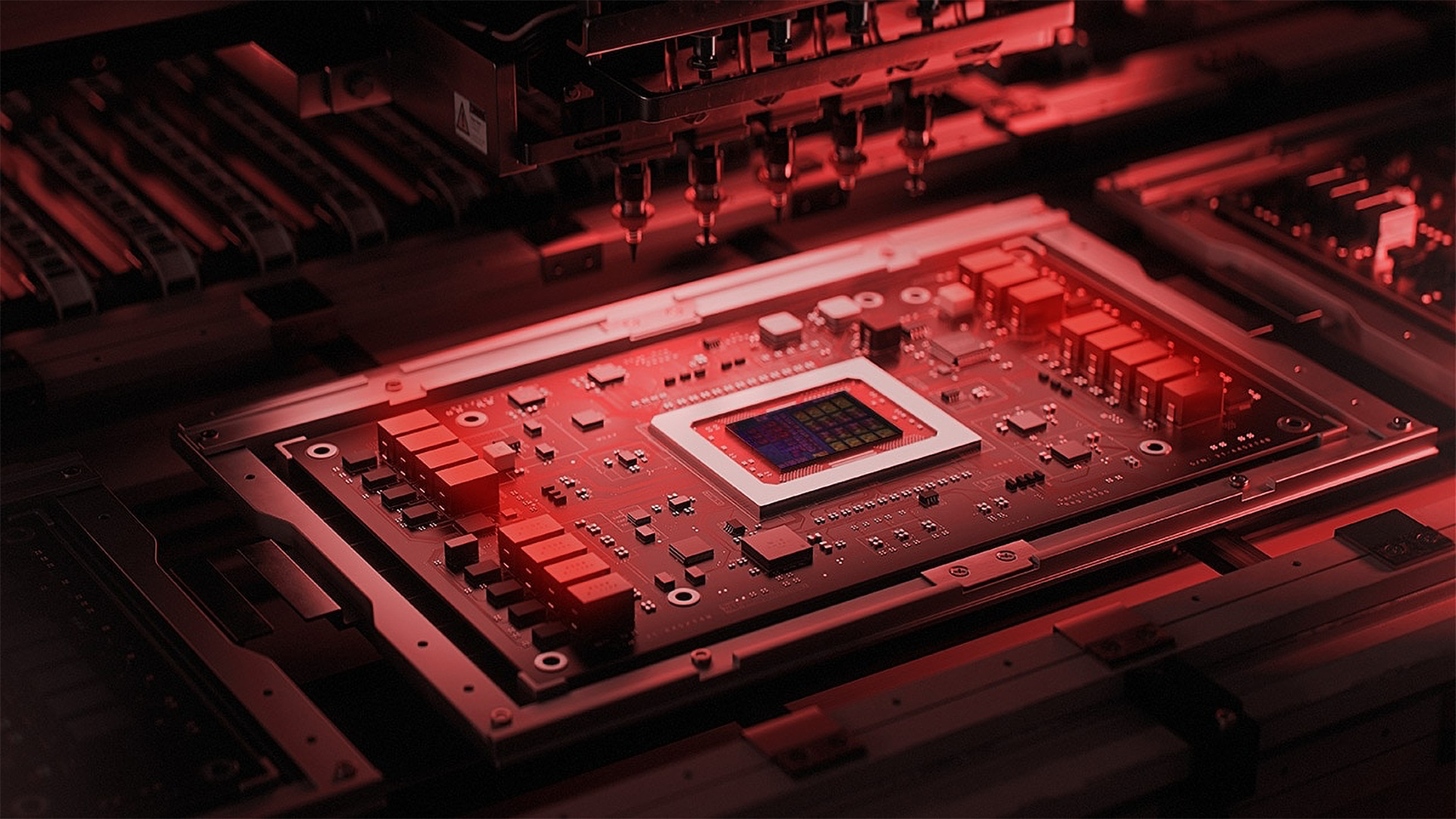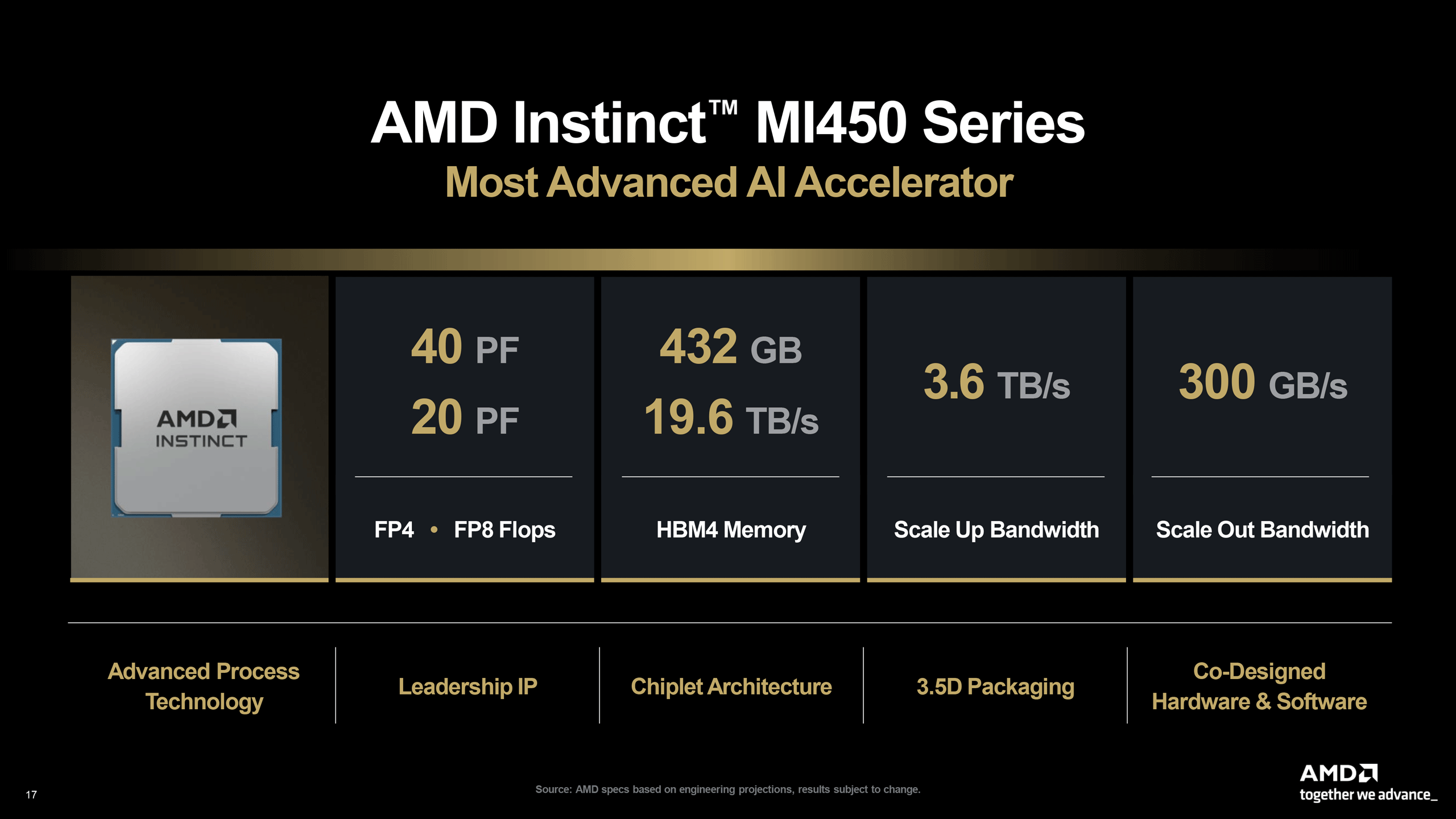AMD's Linux kernel patches suggest enablement of next-gen Instinct MI400-series AI GPU accelerators

AMD has begun upstreaming Linux kernel patches for its next-generation GPU IP blocks, reports Phoronix. Such uploads typically indicate the start of enablement for a new GPU architecture, but in this particular case, the GFXHUB 12.1 may point to support of the CDNA5 architecture that powers the company's next-generation Instinct MI430 and MI450-series accelerators for HPC and AI workloads. There is a chance that we are dealing with AMD's next-generation integrated GPU, however.
The list of GPU IP blocks for which AMD adds hardware enablement includes PSP 15.0.8 (platform security), IH 7.1 (interrupt handler), MMHUB 4.2 (graphics IP), GFXHUB 12.1 (GPU IP), and GMC 12.1 (graphics and memory controller).
AMD has not officially disclosed which of its products use the GFX 12.1 IP, but its latest Radeon RX 9000-series GPUs based on the RDNA 4 architecture use GFX 12 IP. To that end, GFX 12.1 may either point to a superset of the GFX 12 IP for integrated GPUs, AMD's next-generation RDNA 5-based GPUs, or next-generation CDNA 5-based accelerators. A leak from earlier this year indicates that the GFX1250 monikers are reserved for CDNA 5 accelerators, whereas GFX1300 monikers are reportedly meant for RDNA 5 GPUs.
GFX 12.1 IP could point to integrated RDNA 4-based GPUs that have tangible differences from the existing RDNA 4 graphics processors, which justify a new IP denominator, or it could point to the next-generation Instinct MI400-series accelerators based on the CDNA 5. The latter is more likely, as all Zen 5-based APUs rely on RDNA 3.5 GPUs, so it might be too early for RDNA 4-based iGPUs.

HXL points out that AMD's GFX1250 index belongs to the AI-oriented Instinct MI450-series GPUs, whereas the GFX1251 moniker belongs to the HPC-bound Instinct MI430-series processors. Of course, AMD has never confirmed this.

The beginning of the Instinct MI400-series enablement highlights steady execution of AMD's Instinct and CDNA roadmaps both for AI and HPC segments and could serve an indirect testament that the company is on track to refresh its family of Instinct accelerators with all-new offerings next year.
The key question in all of this is when exactly AMD intends to launch its next-generation AI offering — the Instinct MI450 product — and whether it will be able to ramp up its production as well as production of its Helios rack-scale solution based on its EPYC Venice CPUs and Instinct MI450 GPUs before Nvidia rolls out its Vera Rubin platform featuring its next-generation hardware sometimes in Q3 2026.



Follow Tom's Hardware on Google News, or add us as a preferred source, to get our latest news, analysis, & reviews in your feeds.
Get Tom's Hardware's best news and in-depth reviews, straight to your inbox.

Anton Shilov is a contributing writer at Tom’s Hardware. Over the past couple of decades, he has covered everything from CPUs and GPUs to supercomputers and from modern process technologies and latest fab tools to high-tech industry trends.